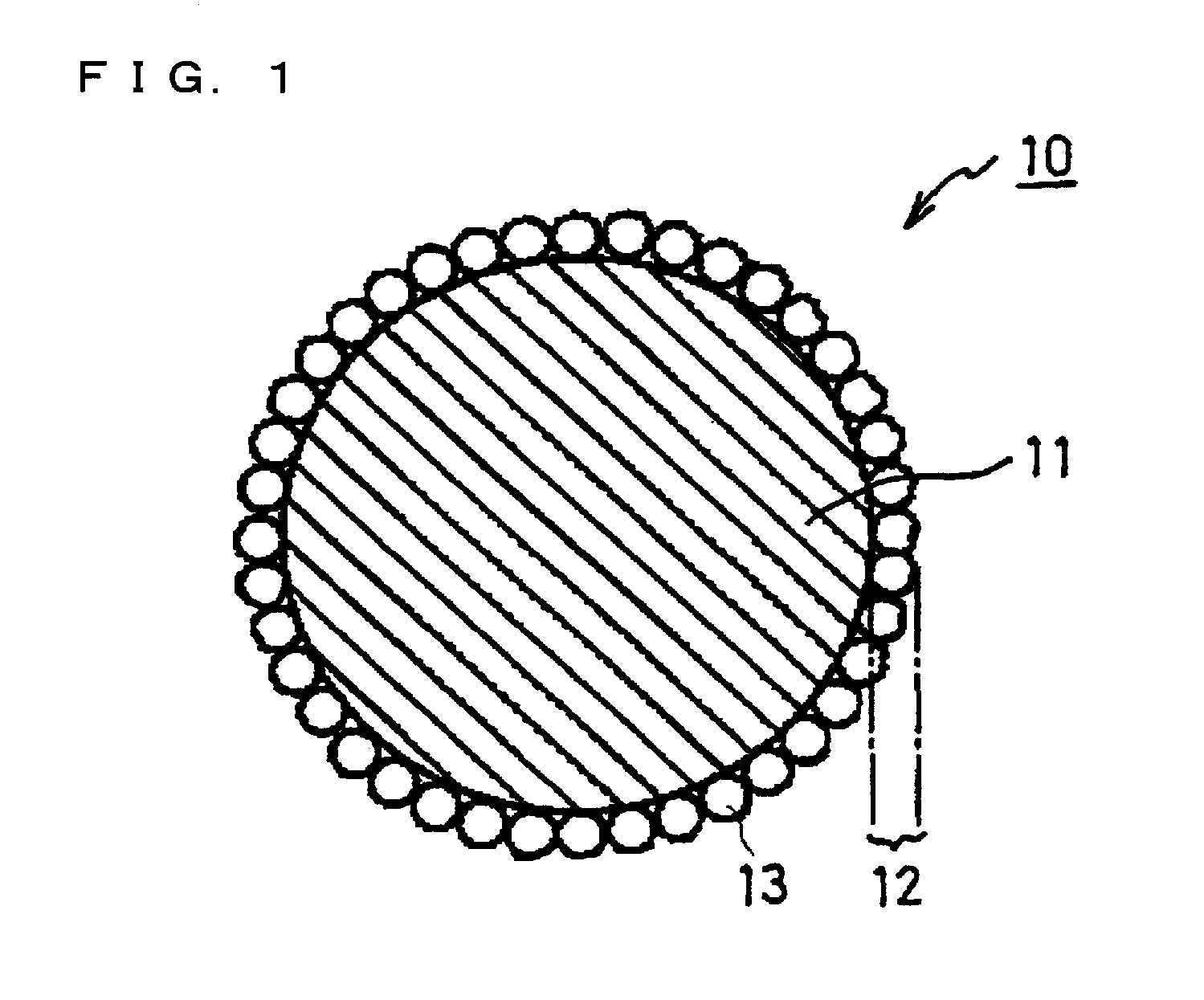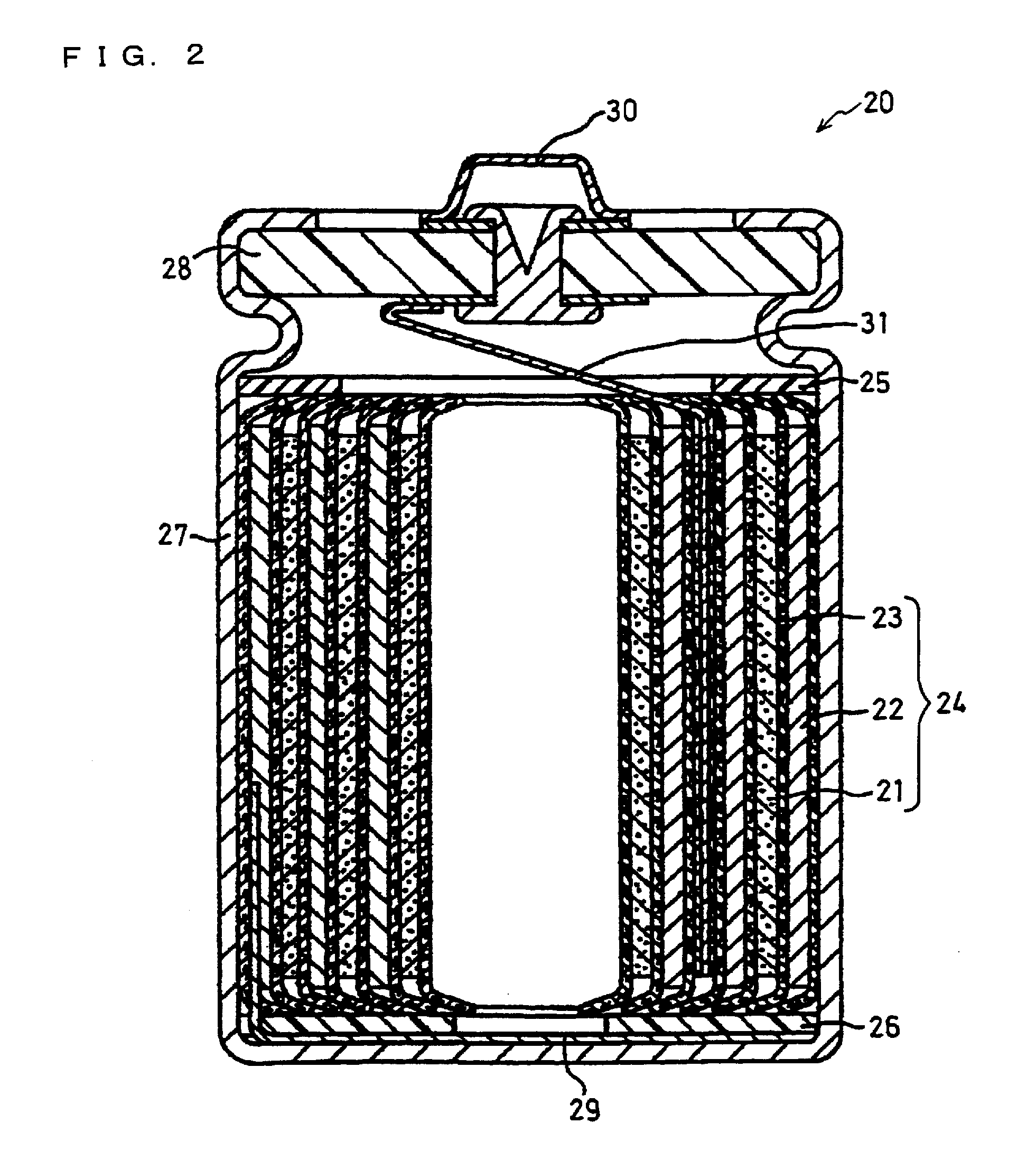Positive electrode active material particles for lithium ion secondary batteries, positive electrode using the same, and lithium ion secondary battery
- Summary
- Abstract
- Description
- Claims
- Application Information
AI Technical Summary
Benefits of technology
Problems solved by technology
Method used
Image
Examples
example 1
[0116](1) Production of Positive Electrode Active Material Particles
[0117]Lithium hydroxide monohydrate, ferrous oxalate dihydrate, and ammonium dihydrogenphosphate were dry mixed at a mole ratio of 1:1:1.
[0118]Next, the obtained mixture was baked under an Ar atmosphere at 800° C. for 24 hours, thereby obtaining core particles a1. The core particle a1 was formed of olivine-structured LiFePO4 and Fe2P, and the content of the Fe2P relative to the total moles of the two compounds was 1.8 mol %.
[0119]The content of the Fe2P in the core particle a1 was measured in the following manner, by using XRD.
[0120]A mixture of the core particles a1 and epoxy resin was applied to a surface of a metal plate, followed by drying. Then, the cross section of the core particle a1 was exposed by FIB (Focused Ion Beam) processing. Next, micro X-ray diffraction was performed on the cross sectional part of the core particle a1. The obtained diffraction pattern was subjected to Rietveld refinement, thereby ob...
example 2
[0138](Production of Positive Electrode Active Material Particles)
[0139]Lithium hydroxide monohydrate, manganese (II) oxalate dihydrate, and ammonium dihydrogenphosphate were mixed at a mole ratio of 1:1:1. Next, the obtained mixture was baked under an Ar atmosphere at 800° C. for 24 hours, thereby obtaining core particles b1. The core particle b1 was formed of olivine-structured LiMnPO4 and Mn2P, and the content of the Mn2P relative to the total moles of the two compounds was 2.0 mol %. The content of the Mn2P in the core particle b1 was measured in the same manner as the content of the Fe2P in the core particle a1 in Example 1.
[0140]Meanwhile, lithium hydroxide monohydrate, manganese (II) chloride tetrahydrate, and phosphoric acid were dissolved at a mole ratio of 1:1:1 in distilled water, thereby preparing an aqueous precursor solution. The obtained aqueous precursor solution was atomized by spray pyrolysis at 500° C., followed by drying, thereby obtaining precursor particulates....
example 3
[0142]Core particles c1 were produced in the same manner as Example 1, except for changing the baking temperature during production of the core particles from 800° C. to 600° C. The obtained core particle c1 was formed of LiFePO4 and FePO3.5, and the content of the FePO3.5 relative to the total moles of the two compounds was 1.0 mol %. Also, the average particle size of the core particle c1 was 1 μm. Except for using the core particles c1 thus obtained and the particulates a2 having an average particle size of 100 nm, positive electrode active material particles C, each in which the particulates a2 were attached to the surface of the core particle c1, were obtained by mechanical alloying in the same manner as Example 1. The average thickness of the shell layer on the positive electrode active material particle C was 100 nm. Further, except for using the positive electrode active material particles C obtained as above, a lithium ion secondary battery was produced and evaluated in the...
PUM
 Login to View More
Login to View More Abstract
Description
Claims
Application Information
 Login to View More
Login to View More - R&D
- Intellectual Property
- Life Sciences
- Materials
- Tech Scout
- Unparalleled Data Quality
- Higher Quality Content
- 60% Fewer Hallucinations
Browse by: Latest US Patents, China's latest patents, Technical Efficacy Thesaurus, Application Domain, Technology Topic, Popular Technical Reports.
© 2025 PatSnap. All rights reserved.Legal|Privacy policy|Modern Slavery Act Transparency Statement|Sitemap|About US| Contact US: help@patsnap.com



